Combined Operation of Electrical Loads, Air Conditioning and Photovoltaic-Battery Systems in Smart Houses
Abstract
:1. Introduction
2. Modeling of the System
2.1. Modeling of the Energy Management System
- Control of shiftable loads;
- Control of the air conditioning (thermal storage);
- Control of the electric storage system.
- Enable controllable devices, such as shiftable loads and air conditioning, thus modifying their power demand; and
- Absorb the necessary amount of power from available sources to guarantee the energy requirements of the households.
- External to the Smart-Home, such as energy price, and outdoor temperature;
- Internal to the Smart-Home, such as indoor temperature, presence of people, and State Of Charge (SOC) of the energy storage system;
- Data from a local generation system: PV production;
- Data set by the end-user: temperature set-point, priority list of programmable electrical loads, and presence of not programmable electrical loads.
- Shiftable loads;
- Battery storage charging and selection of energy sources; and
- Thermal storage of electrical PV energy.
2.2. Modeling of the Smart House with the Photovoltaic-Battery Systems
- 1.
- Data Acquisition
- -
- PV Generator: technical characteristics and initial investment;
- -
- Energy Storage System (ESS): technical characteristics and initial investment;
- -
- Building thermal characteristics; and
- -
- Shiftable Loads.
- 2.
- Calculation of the specific operating cost of the PV-battery hybrid system.This parameter allows deciding if it is more convenient to use the PV system or the grid to charge the battery. It also determines whether it is best, inside the smart-house, to absorb energy from the PV system or from the battery rather than to absorb it from the grid.
- 3.
- Monte Carlo Simulation
- -
- Generating stochastic variables: PV-Power, Initial SOC, Real Time Pricing, and Weather Conditions; and
- -
- Simulation of Simulink and Stateflow models: economic, thermal, PV and ESS, control logic.
- 4.
- Output results: energy and cost values.
- -
- Feeding the electrical loads from the grid, from PV system or ESS. If the first power source is not enough, the EMS also decides to use the next one so that the balance between the power required by the loads and the power supplied by the electric sources is respected.
- -
- Charging the battery through the grid or the PV system;
- -
- Saving the excess energy produced by the PV system, transforming it into thermal energy and storing it as thermal storage by changing the temperature set point, which implies an increase in the power absorbed by the air conditioning system;
- -
- Returning the thermal energy stored in the smart-house: this action implies a reduction in the power absorbed by the air conditioning system; and
- -
- Injecting to the grid the excess energy from the PV system.
3. Economic Model
- 44% electrical power from the grid (CEGrid);
- 43% electricity power system services by DSO and TSO (CPSS); and
- 13% government taxes (Tax).
4. Simulation Results
- Energy real time price;
- Outdoor temperature;
- Initial indoor temperature;
- Set-point temperature;
- Initial State Of Charge (SOC); and
- PV electrical energy production.
- Electricity Power System Services Cost (CPSS);
- Taxes (Tax); and
- Net Metering Service (PSSP).
5. Conclusions
Author Contributions
Conflicts of Interest
References
- Erdinc, O.; Paterakis, N.G.; Pappi, I.N.; Bakirtzis, A.G.; Catalão, J.P.S. A new perspective for sizing of distributed generation and energy storage for smart households under demand response. Appl. Energy 2015, 143, 26–37. [Google Scholar] [CrossRef]
- Iwafune, Y.; Ikegami, T.; Fonseca, J.G.S., Jr.; Oozeki, T.; Ogimoto, K. Cooperative home energy management using batteries for a photovoltaic system considering the diversity of households. Energy Convers. Manage. 2015, 96, 322–329. [Google Scholar] [CrossRef]
- Deeba, S.R.; Sharma, R.; Saha, T.K. Coordinated control of multi-functional battery energy storage system in an unbalanced network. IEEE Power Eng. Conf. 2014, 1, 1–6. [Google Scholar]
- Wu, Z.; Tazvinga, H.; Xia, X. Demand side management of photovoltaic-battery hybrid system. Appl. Energy 2015, 148, 294–304. [Google Scholar] [CrossRef]
- Hussein, A.A.H.; Harb, S.; Kutkut, N.; Shen, J.; Batarseh, I. Design considerations for distributed micro-storage systems in residential applications. IEEE Telecommun. Energy Conf. 2010, 1, 1–6. [Google Scholar]
- Wang, B.; Sechilariu, M.; Locment, F. Intelligent DC microgrid with smart grid communications: Control strategy consideration and design. IEEE Trans. Smart Grid 2012, 3, 2148–2156. [Google Scholar] [CrossRef]
- Tan, K.T.; So, P.L.; Chu, Y.C.; Kwan, K.H. Modeling, control and simulation of a photovoltaic power system for grid-connected and stand-alone applications. IEEE IPEC 2010, 1, 608–613. [Google Scholar]
- Zhu, D.; Wang, Y.; Chang, N.; Pedram, M. Optimal design and management of a smart residential PV and energy storage system. IEEE Des. 2014, 1, 1–6. [Google Scholar]
- Riffonneau, Y.; Bacha, S.; Barruel, F.; Ploix, S. Optimal power flow management for grid connected PV systems with batteries. IEEE Trans. Sustain. Energy 2011, 2, 309–320. [Google Scholar] [CrossRef]
- Arangarajan, V.; Oo, A.M.T.; Shafiullah, G.M.; Seyedmahmoudian, M.; Stojcevski, A. Optimum design and analysis study of stand-alone residential solar PV microgrid. IEEE Power Eng. Conf. 2014, 1, 1–7. [Google Scholar]
- Cho, J.H.; Hong, W.P. Power control and modeling of a solar-ultra capacitor hybrid energy system for stand-alone applications. IEEE Control Autom. Syst. 2010, 1, 811–814. [Google Scholar]
- Shah, A.S.M.; Ishikawa, Y.; Odakura, S.; Kakimoto, N. Power control modelling for future energy management based on photovoltaic integrated system with lithium-ion storage batteries. IEEE Model. Symp. 2014, 1, 187–192. [Google Scholar]
- Chokchai, C. Power flow control and MPPT parameter selection for residential grid-connected PV systems with battery storage. IEEE Power Electron. Conf. 2014, 1, 3789–3795. [Google Scholar]
- Kim, H.; Parkhideh, B.; Bongers, T.D.; Gao, H. Reconfigurable solar converter: A single-stage power conversion PV-battery system. IEEE Trans. Power Electron. 2013, 28, 3788–3797. [Google Scholar] [CrossRef]
- Ranaweera, I.; Sanchez, S.; Midtgard, O.M. Residential photovoltaic and battery energy system with grid support functionalities. IEEE Power Electron. Distrib. Gener. Syst. 2015, 1, 1–7. [Google Scholar]
- Choi, S.C.; Sin, M.H.; Kim, D.R.; Won, C.Y.; Jung, Y.C. Versatile power transfer strategies of PV-battery hybrid system for residential use with energy management system. IEEE Power Electron. Conf. 2014, 1, 409–414. [Google Scholar]
- Clark, J.D.; Stark, B.H. Component sizing for multi-source renewable energy systems. IEEE Ind. Inf. 2009, 1, 89–94. [Google Scholar]
- Qi, Z. Coordinated control for independent wind-solar hybrid power system. IEEE Power Energy Eng. Conf. 2012, 1, 1–4. [Google Scholar]
- Al-Falahi, M.D.A.; Wanik, M.Z.C. Modeling and performance analysis of hybrid power system for residential application. IEEE Power Eng. Conf. 2015, 1, 1–6. [Google Scholar]
- Siano, P.; Sarno, D. Assessing the benefits of residential demand response in a real time distribution energy market. Appl. Energy 2016, 161, 533–551. [Google Scholar] [CrossRef]
- Siano, P. Demand response and smart grids-a survey. Renew. Sustain. Energy Rev. 2014, 30, 461–478. [Google Scholar] [CrossRef]
- Shariatzadeha, F.; Mandalb, P.; Srivastavac, A.K. Demand response for sustainable energy systems: A review, application and implementation strategy. Renew. Sustain. Energy Rev. 2015, 45, 343–350. [Google Scholar] [CrossRef]
- Ruan, B.; Yang, Q.; Fang, X.; Yan, W. Demand response under real-time pricing for domestic energy system with DGs. IEEE Power Syst. Technol. 2014, 1, 3103–3110. [Google Scholar]
- Siano, P.; Graditi, G.; Atrigna, M.; Piccolo, A. Designing and testing decision support and energy management systems for smart homes. J. Ambient Intell. Humaniz. Comput. 2013, 4, 651–661. [Google Scholar] [CrossRef]
- Lamina, P.; Romano, R.; Sarno, D.; Siano, P.; Zakariazadeh, A. A model for wind turbines placement within a distribution network acquisition market. IEEE Trans. Ind. Inf. 2015, 11, 210–219. [Google Scholar] [CrossRef]
- Acone, M.; Romano, R.; Piccolo, A.; Siano, P.; Loia, F.; Ippolito, M.G.; Zizzo, G. Designing an energy management system for smart houses. Environ. Electr. Eng. 2015, 1, 1677–1682. [Google Scholar]
- Molderink, A.; Bakker, V.; Bosman, M.G.C.; Hurink, J.L.; Smit, G.J.M. Management and control of domestic smart grid technology. IEEE Trans. Smart Grid 2010, 1, 109–119. [Google Scholar] [CrossRef]
- Korkas, C.D.; Baldi, S.; Michailidis, I.; Kosmatopoulos, E.B. Occupancy-based demand response and thermal comfort optimization in microgrids with renewable energy sources and energy storage. Appl. Energy 2016, 163, 93–104. [Google Scholar] [CrossRef]
- Wang, X.; Palazoglu, A.; El-Farra, N.H. Operational optimization and demand response of hybrid renewable energy systems. Appl. Energy 2015, 143, 324–335. [Google Scholar] [CrossRef]
- Paterakis, N.G.; Erdinç, O.; Bakirtzis, A.G.; Catalão, J.P.S. Optimal household appliances scheduling under day-ahead pricing and load-shaping demand response strategies. IEEE Trans. Ind. Inf. 2015, 11, 1509–1519. [Google Scholar] [CrossRef]
- Shirazi, E.; Zakariazadeh, A.; Jadid, S. Optimal joint scheduling of electrical and thermal appliances in a smart home environment. Energy Convers. Manage. 2015, 106, 181–193. [Google Scholar] [CrossRef]
- Graditi, G.; Ippolito, M.G.; Telaretti, E.; Zizzo, G. Technical and economical assessment of distributed electrochemical storages for load shifting applications: An Italian case study. Renew. Sustain. Energy Rev. 2016, 57, 515–523. [Google Scholar] [CrossRef]
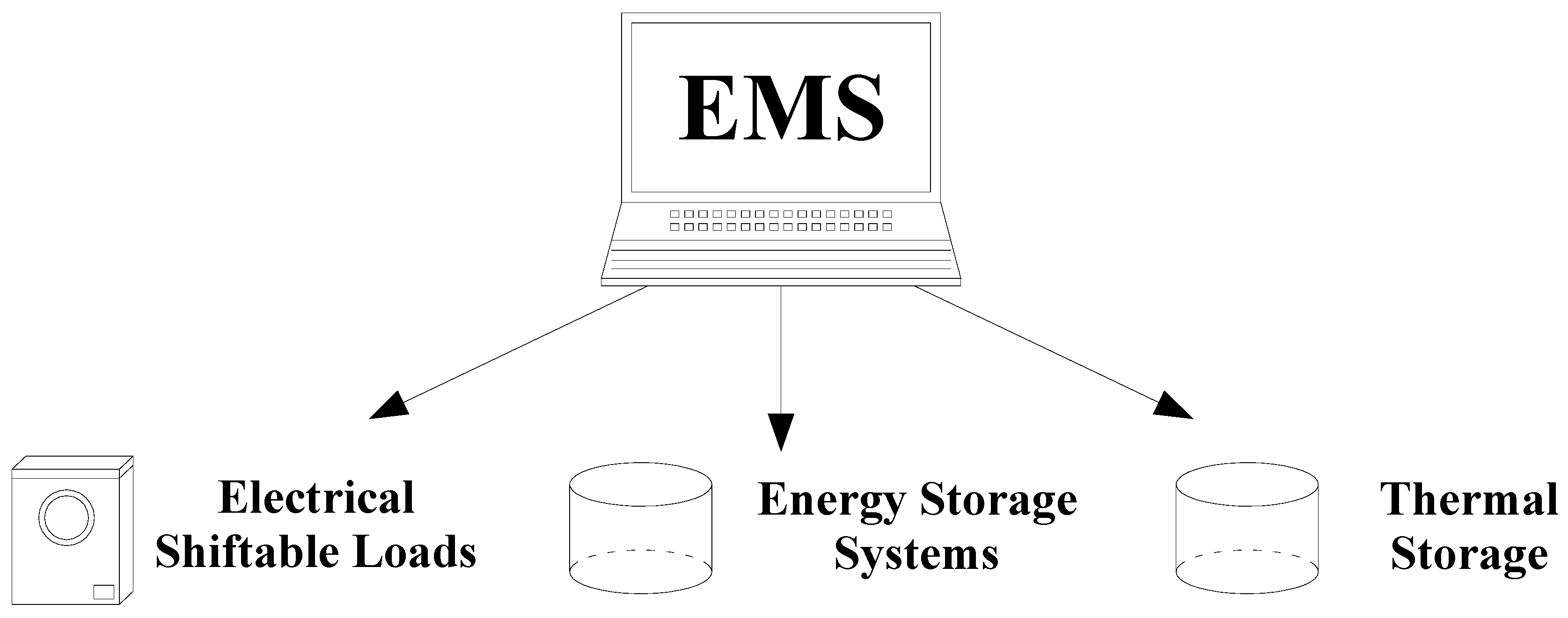
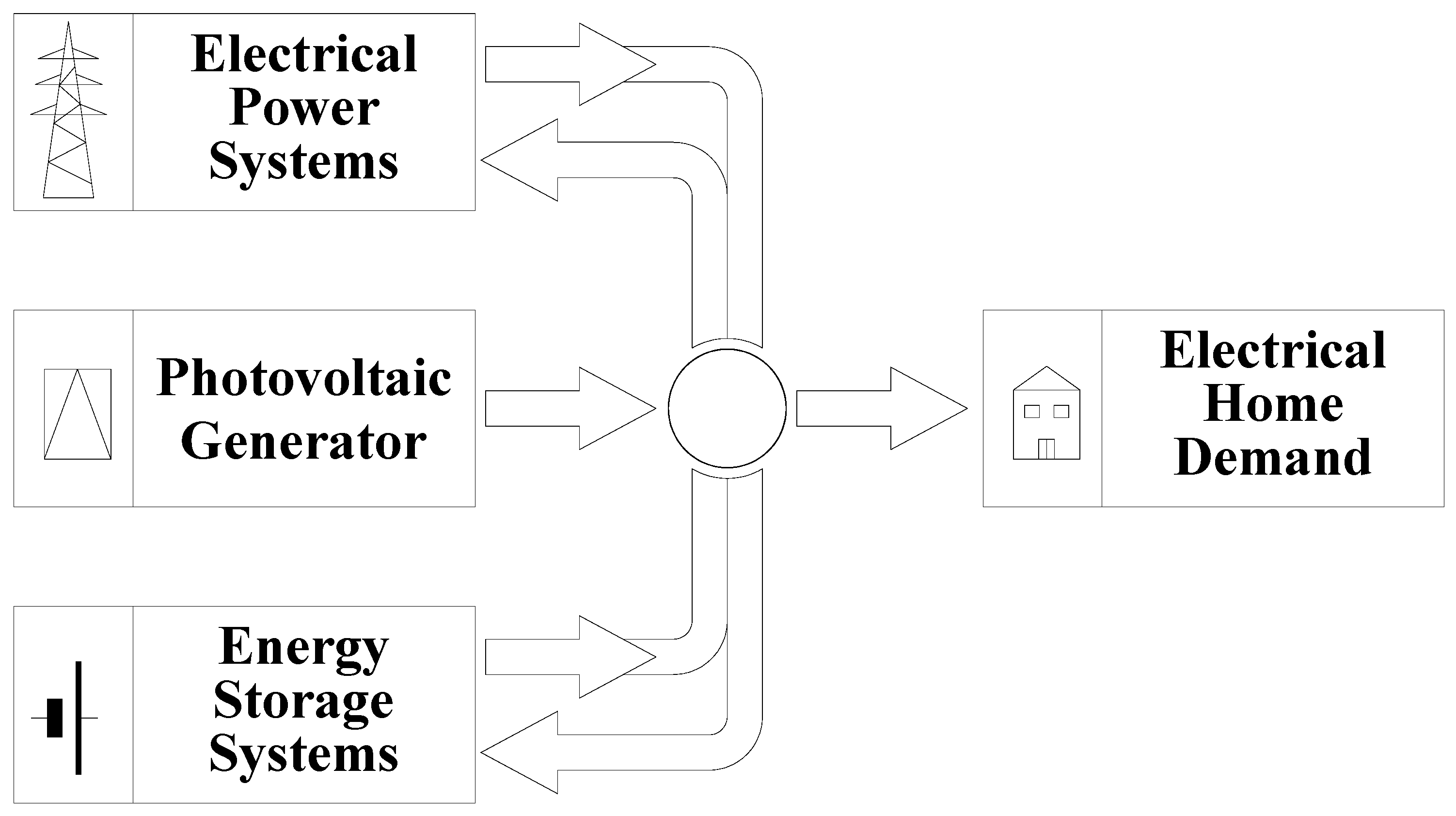
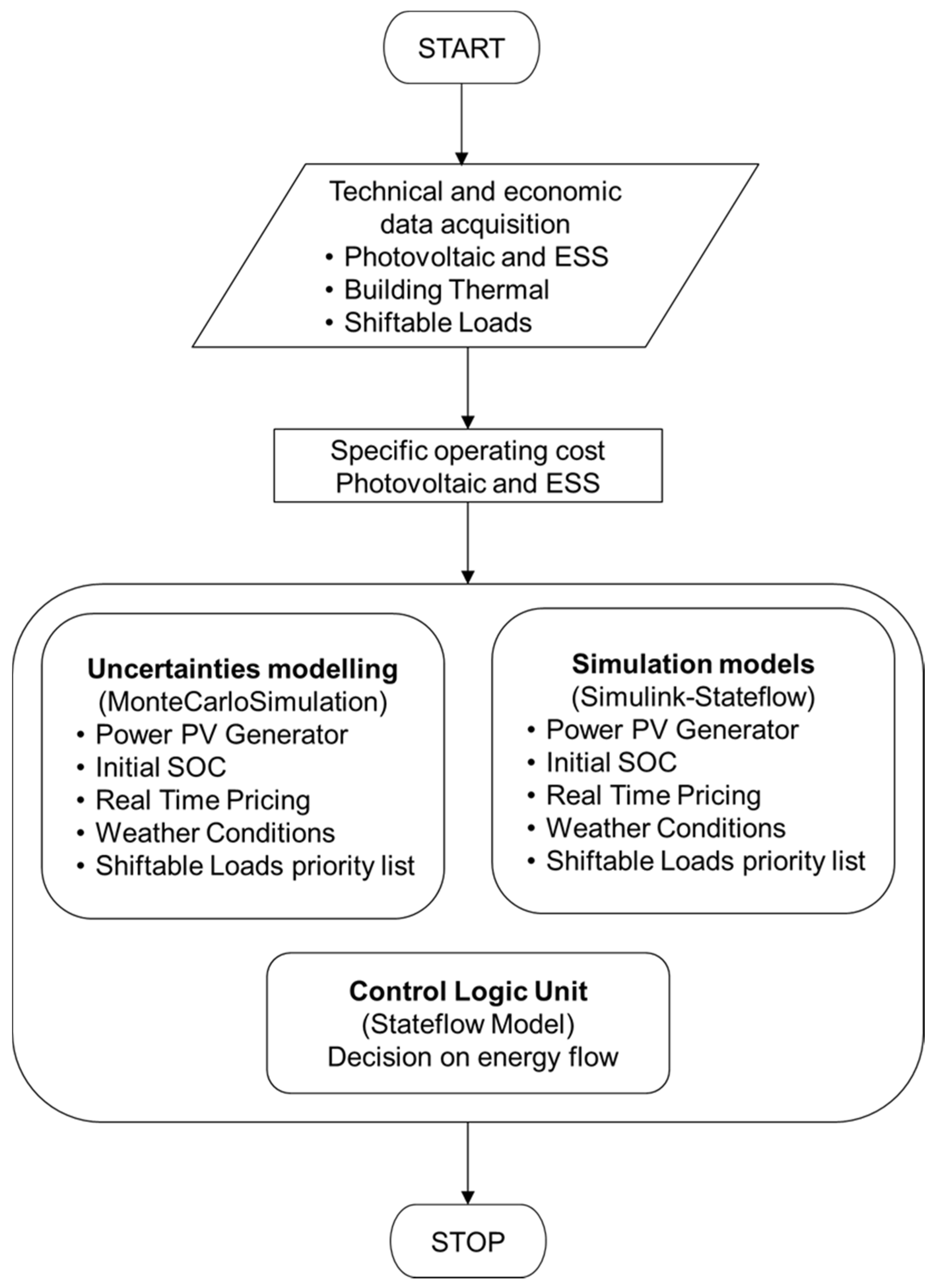

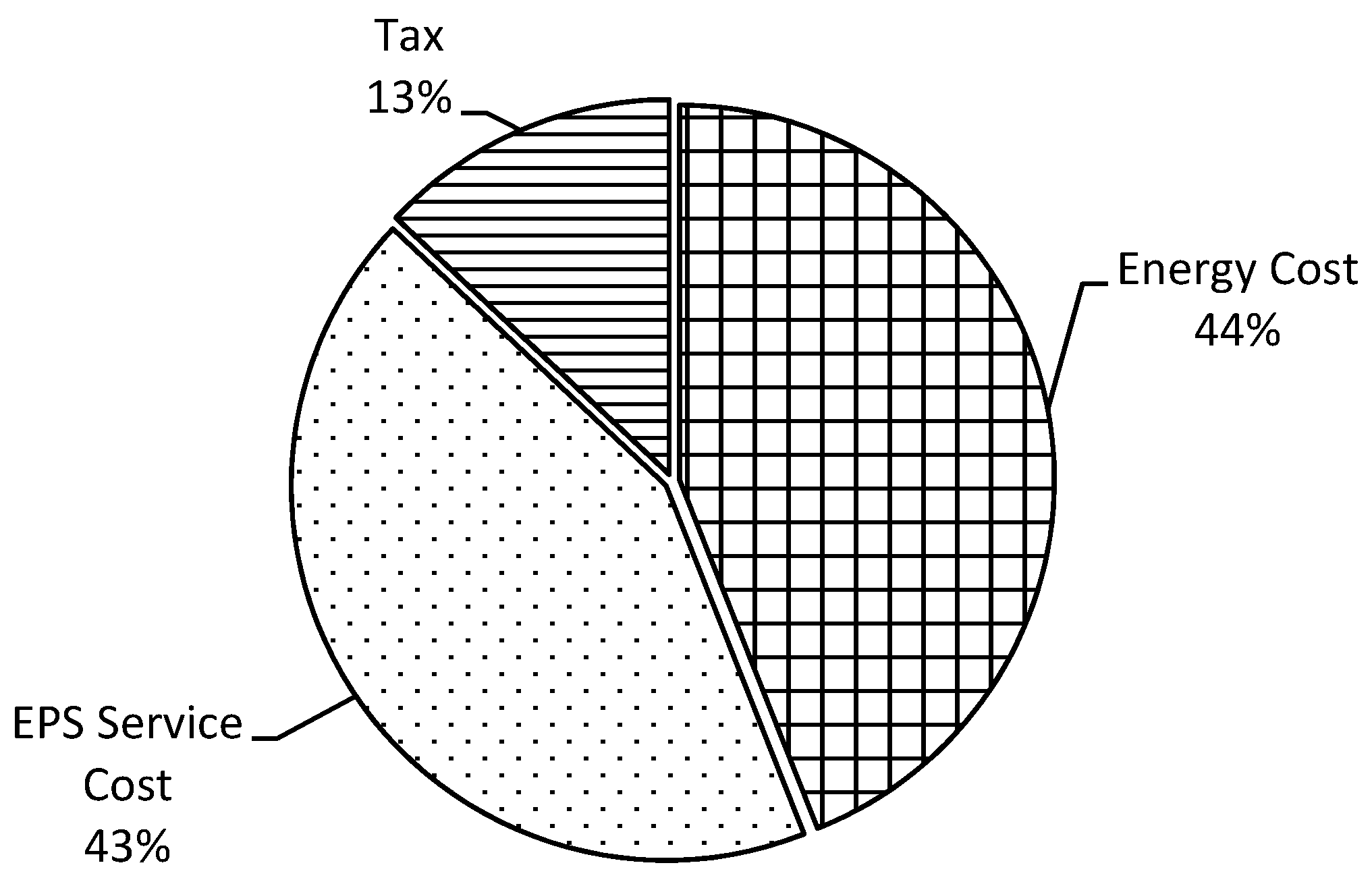
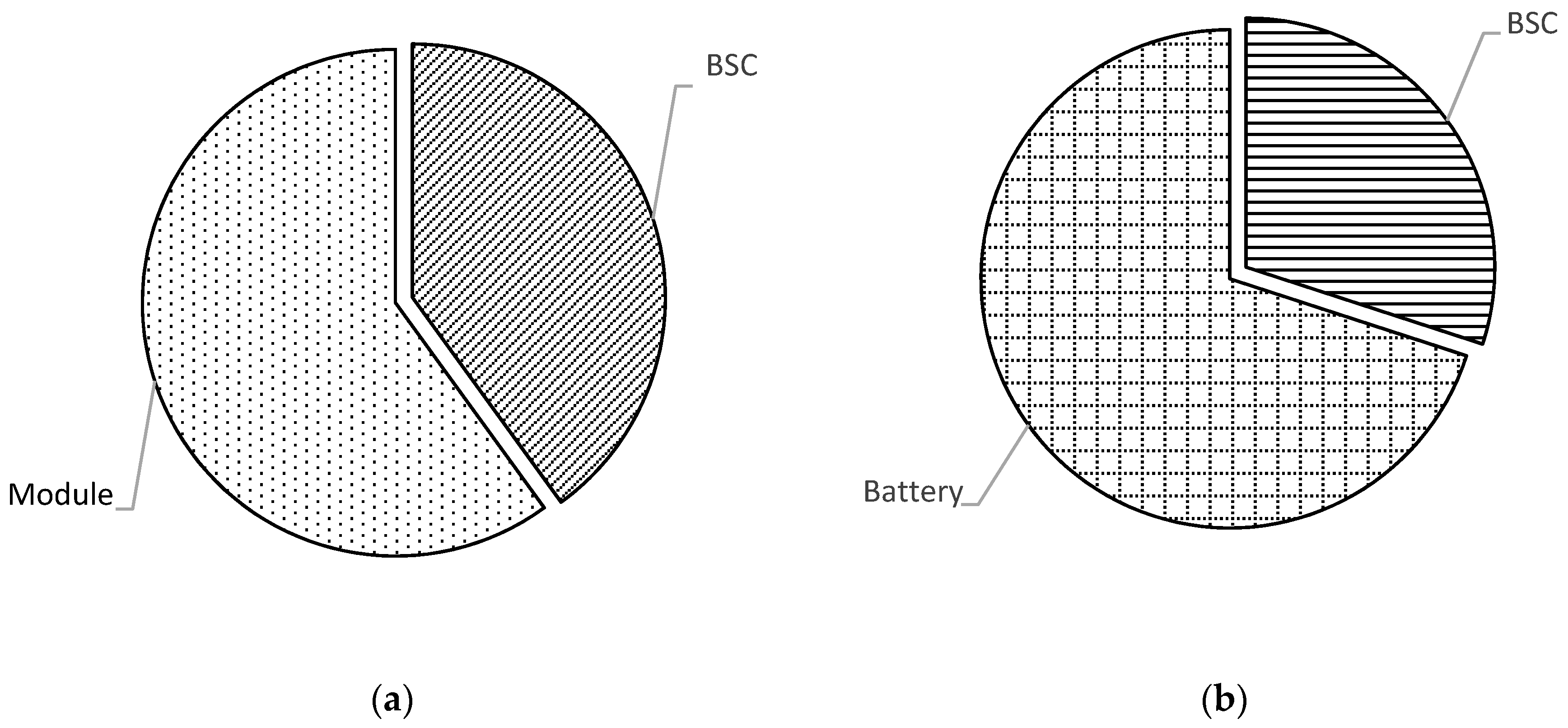
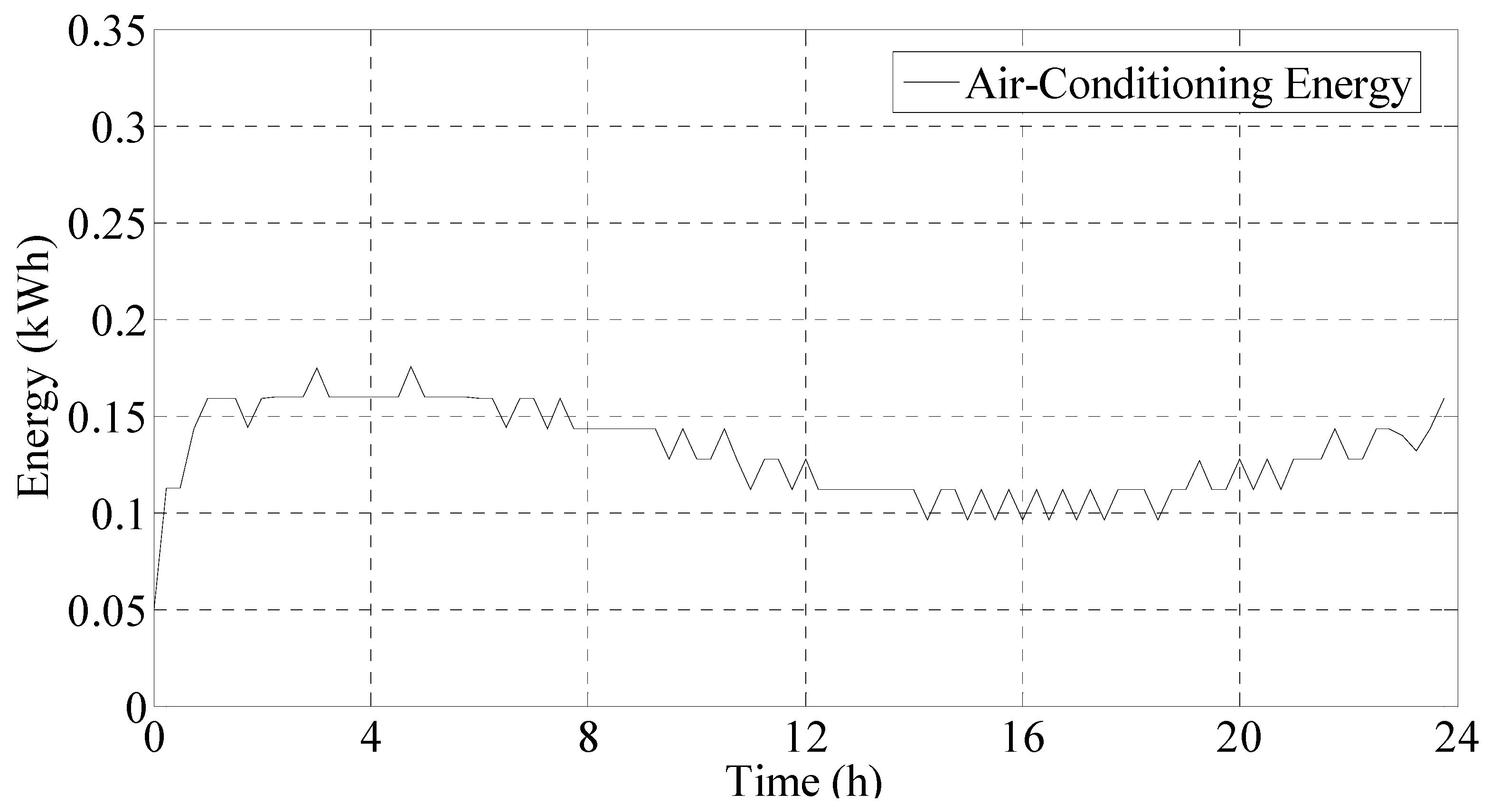
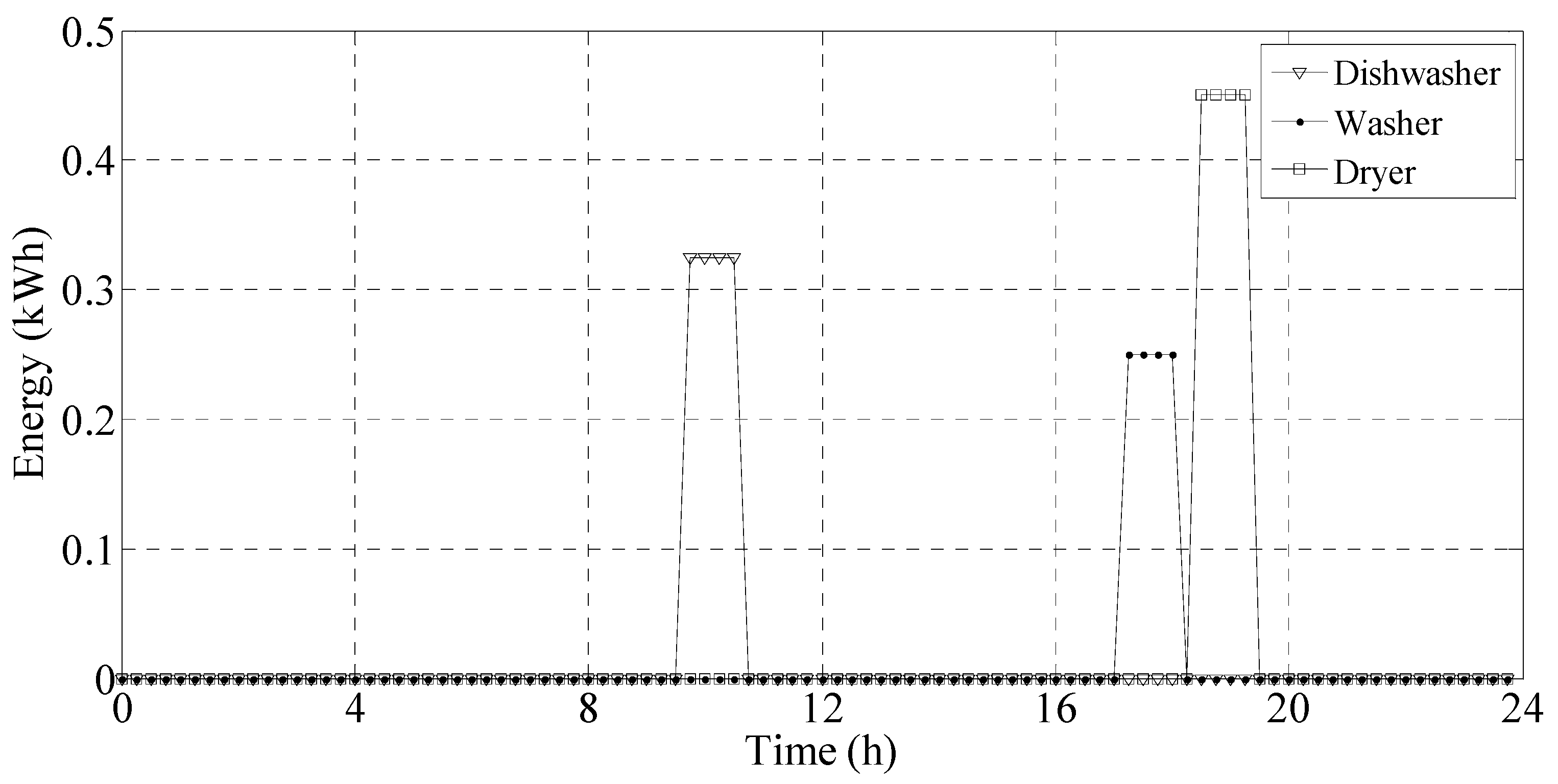

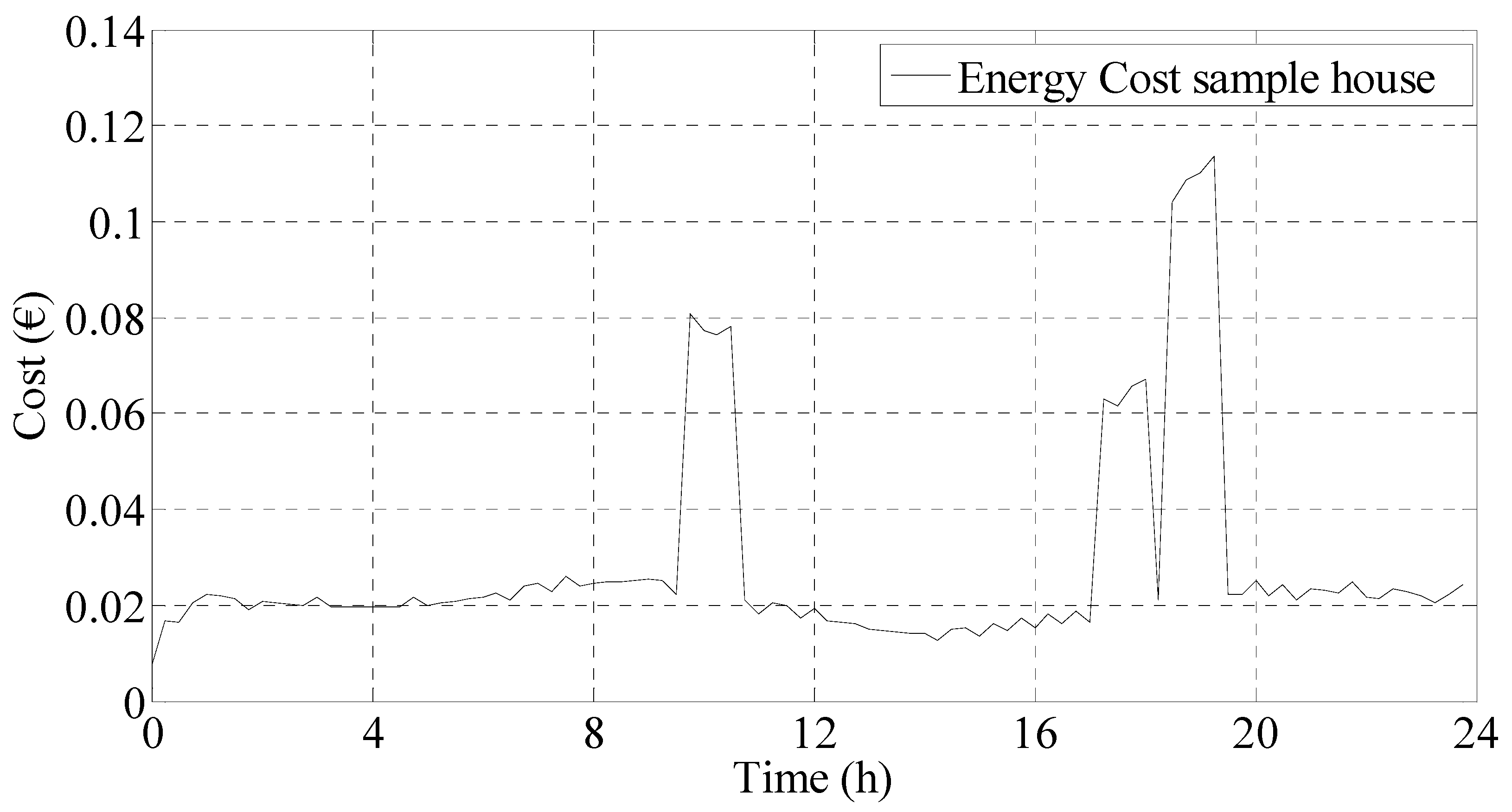
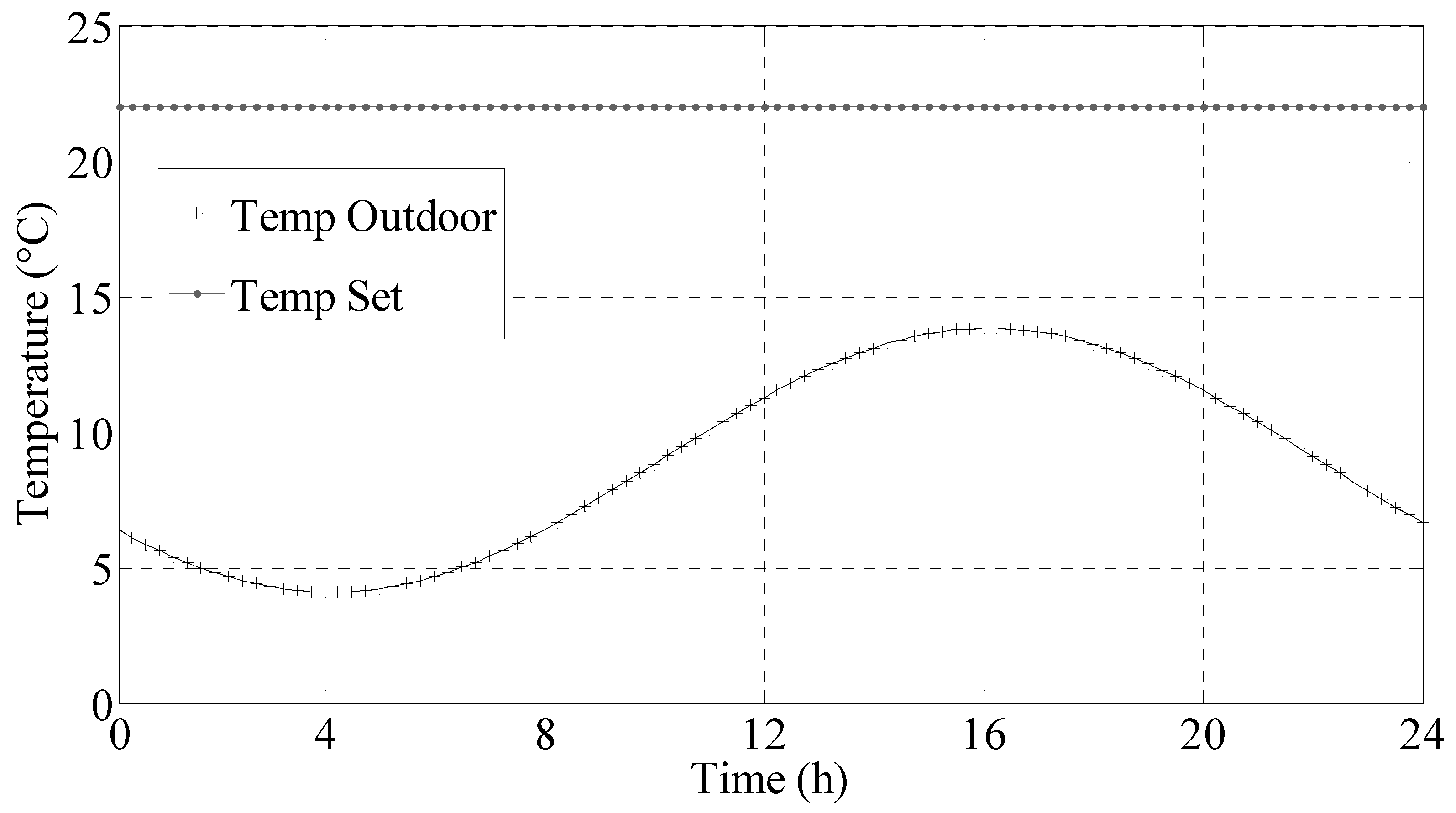
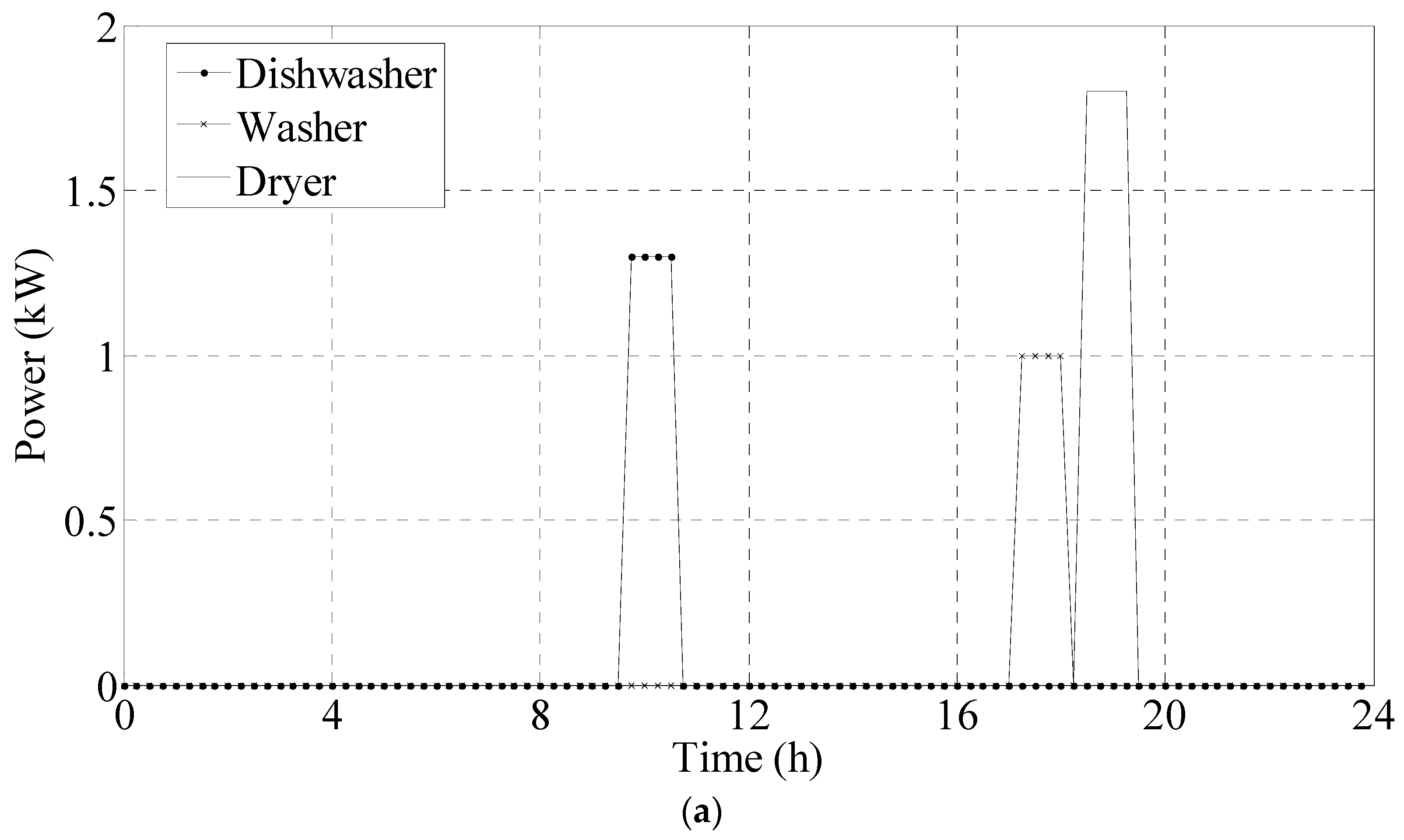
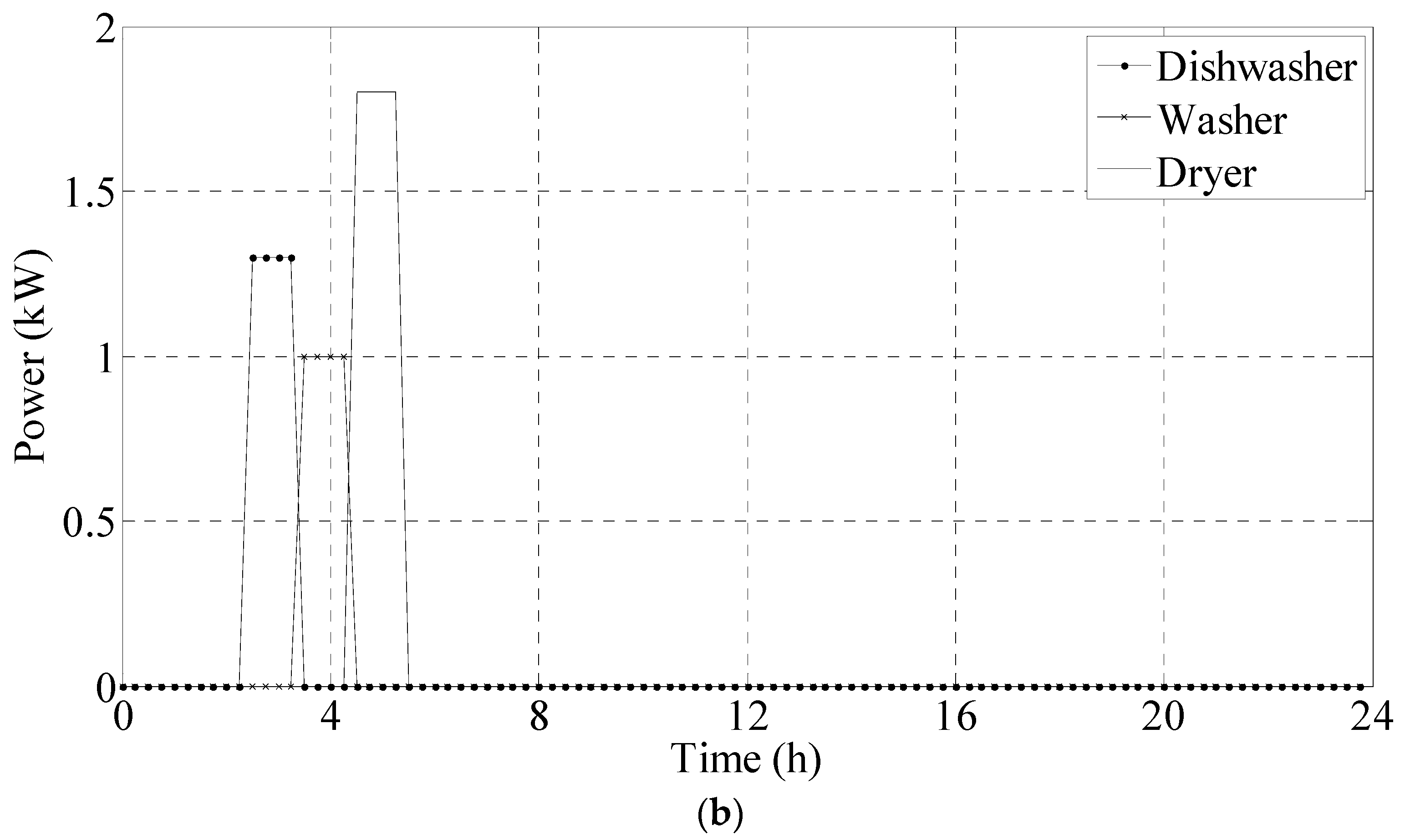
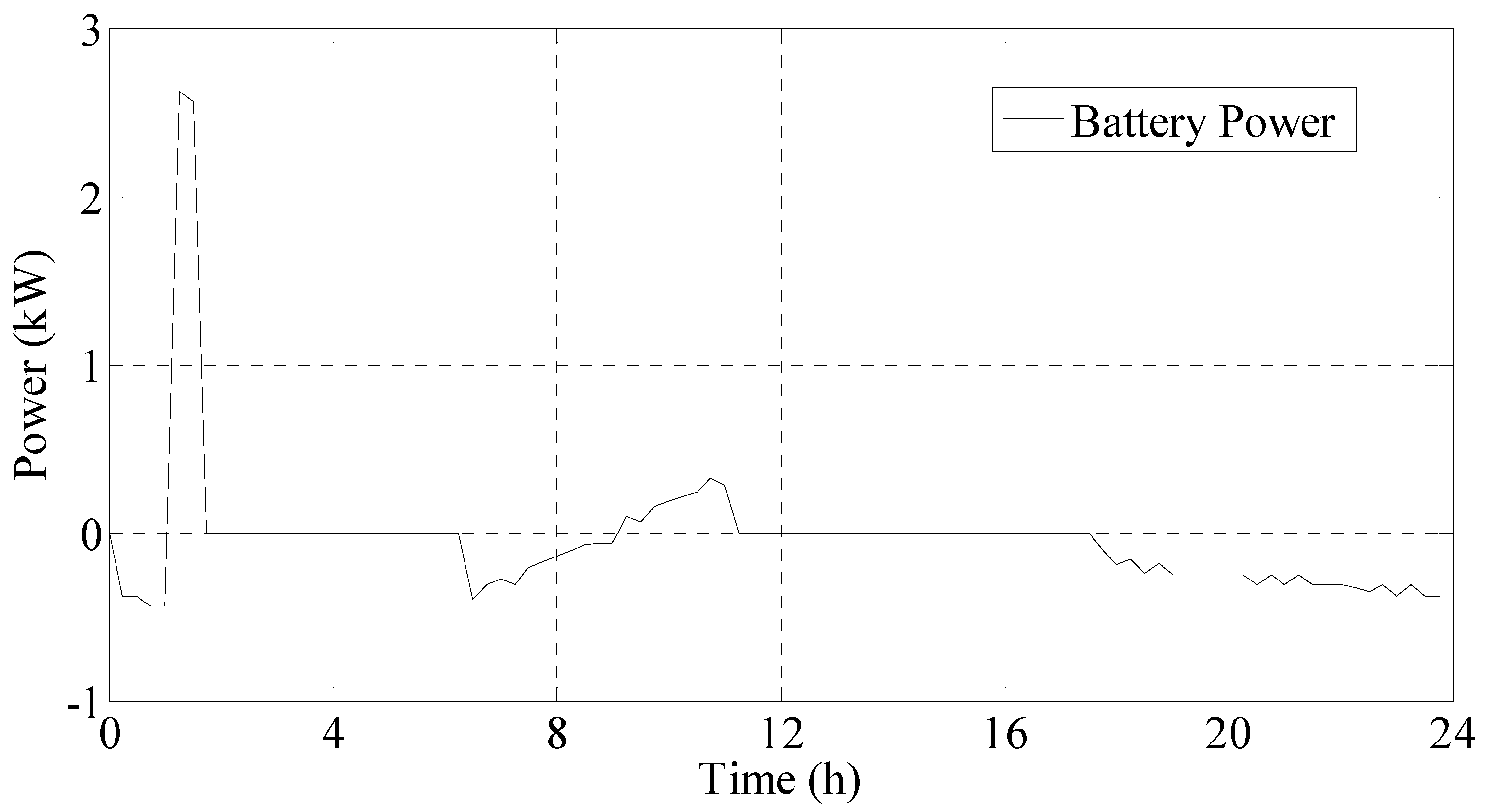
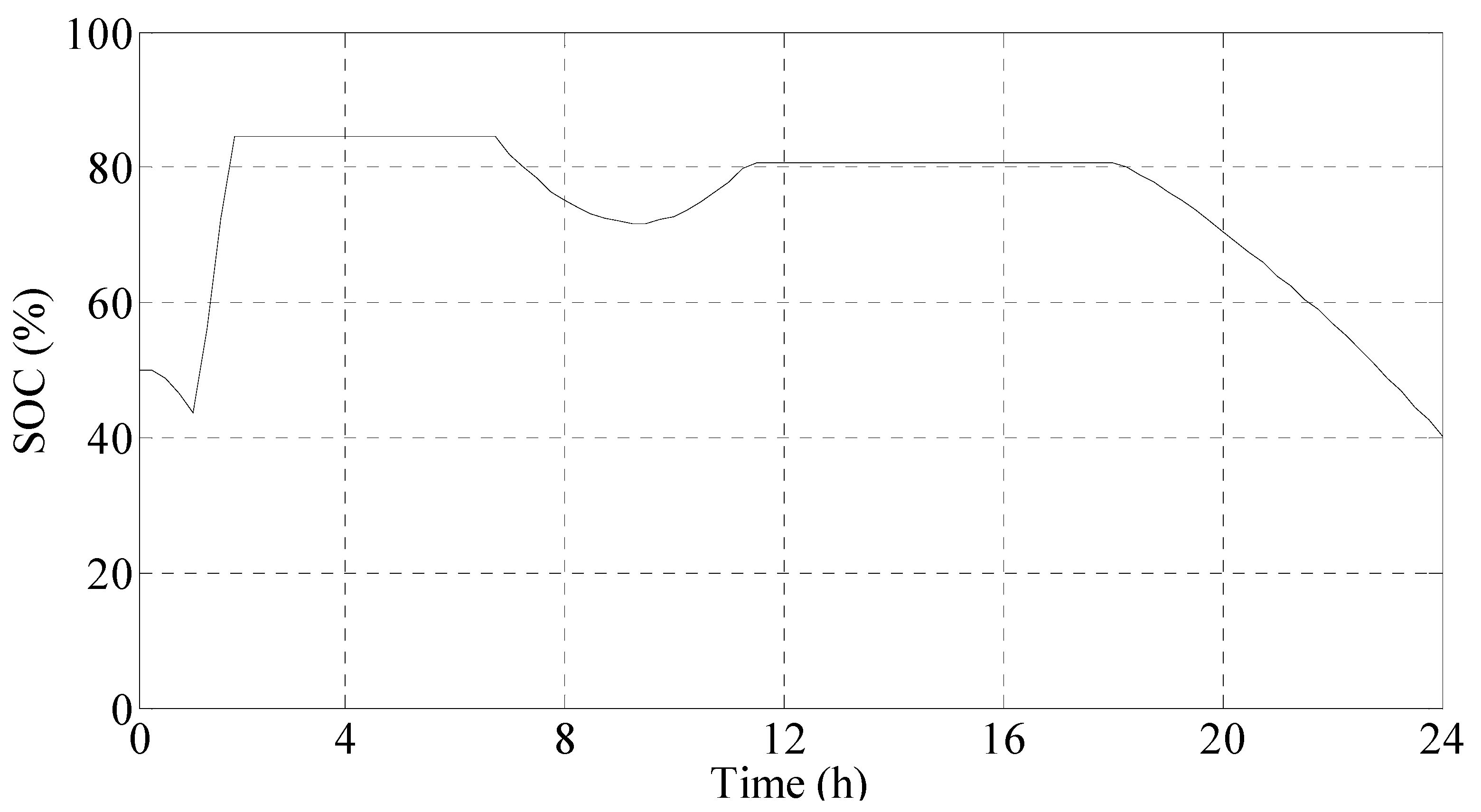
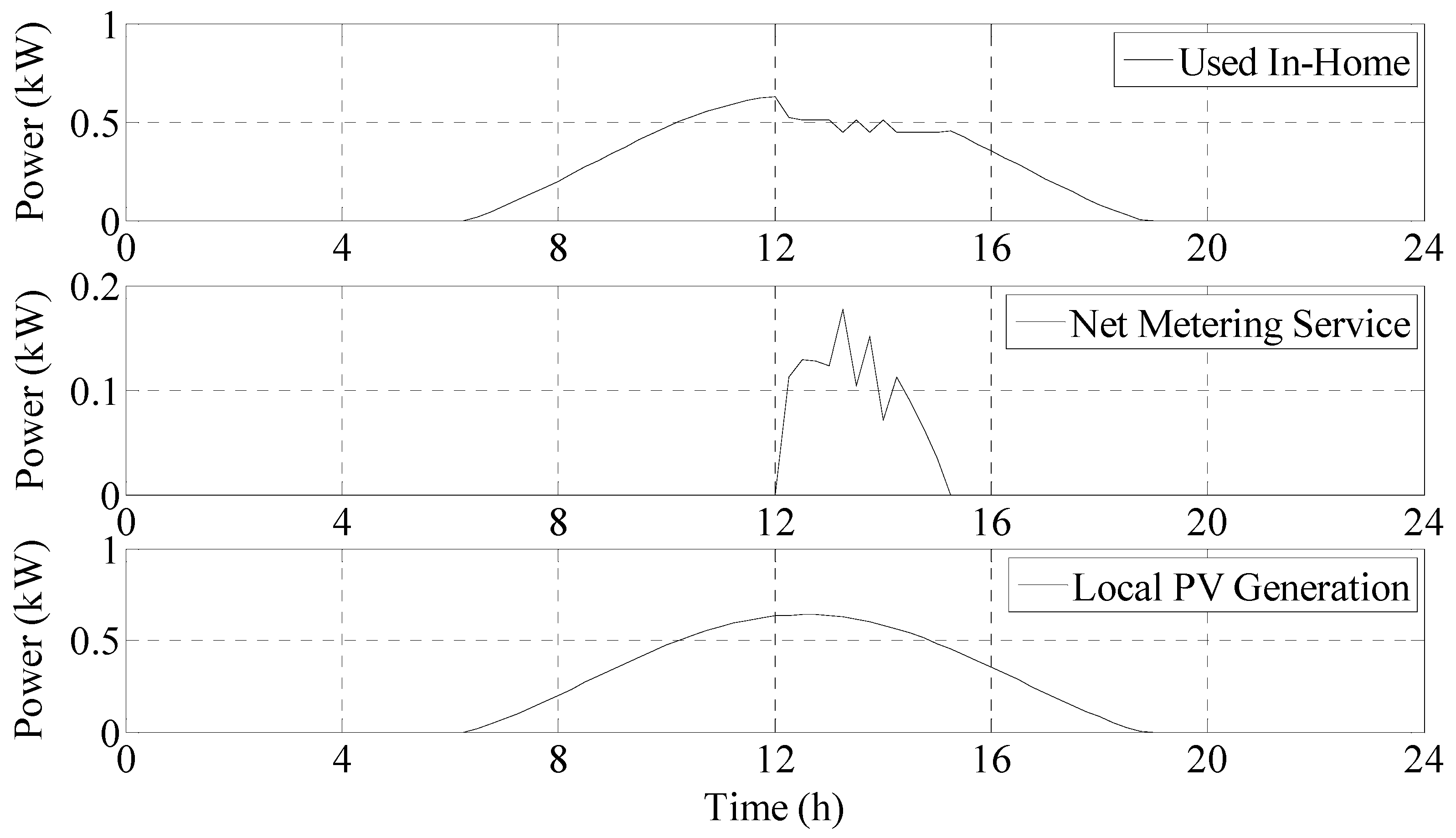

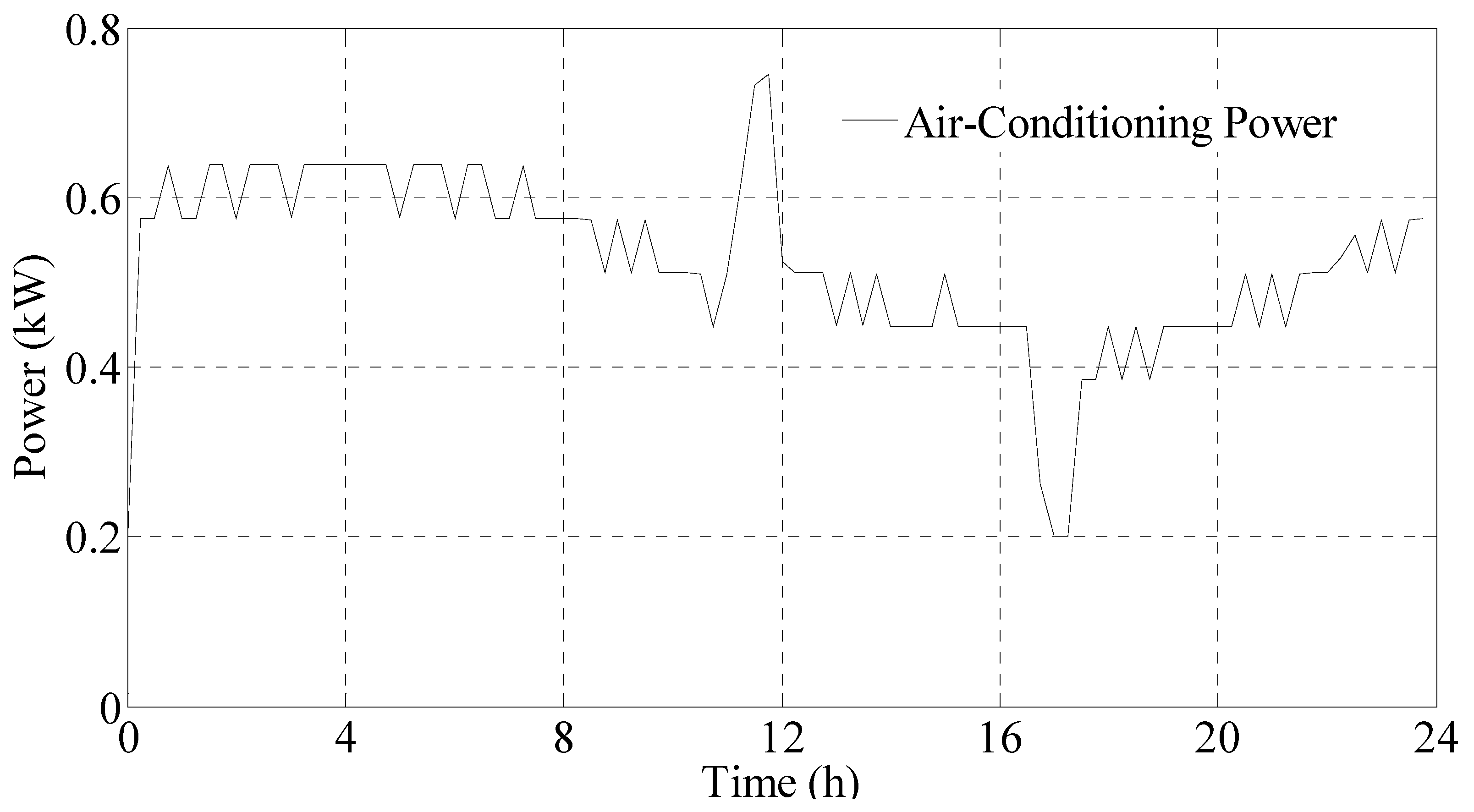
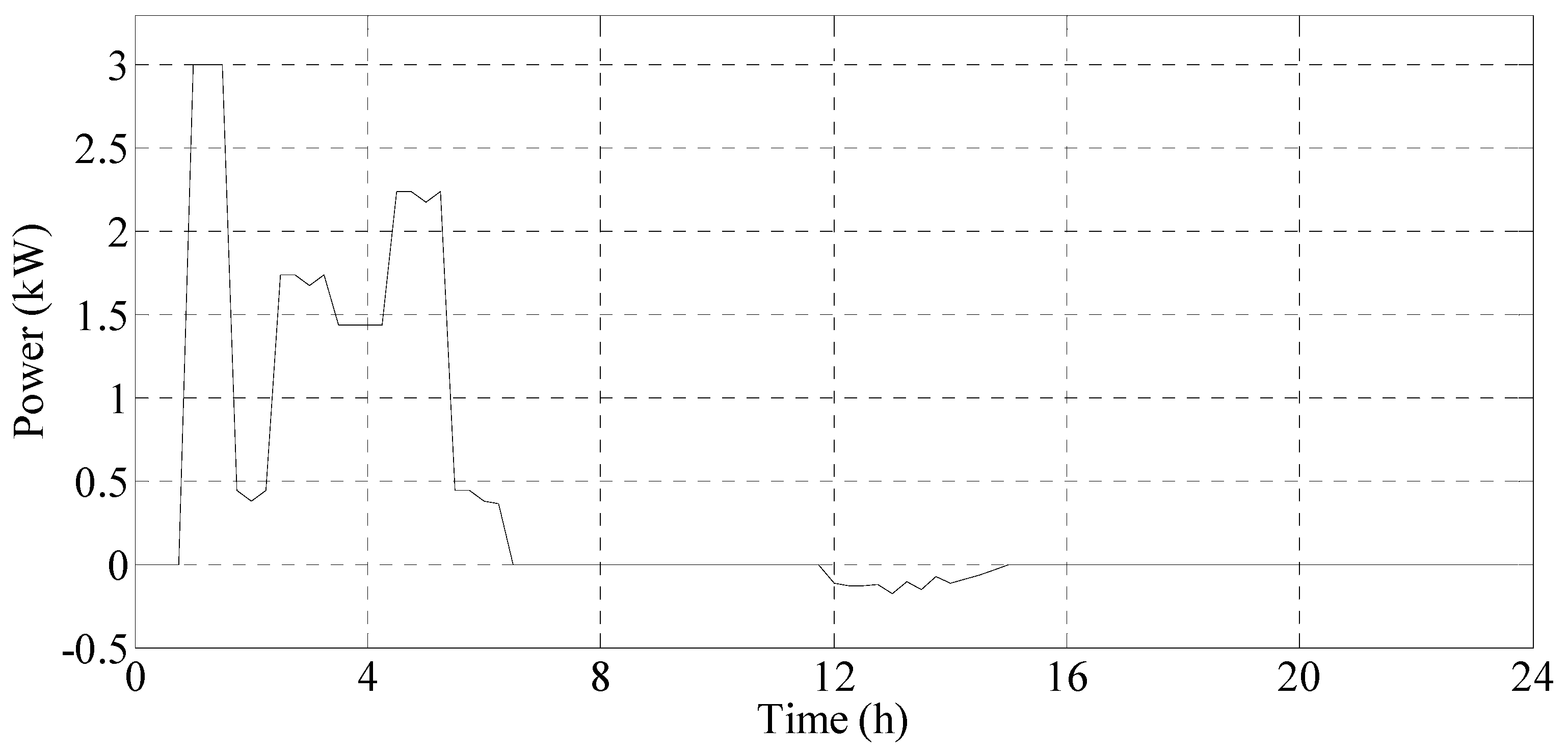

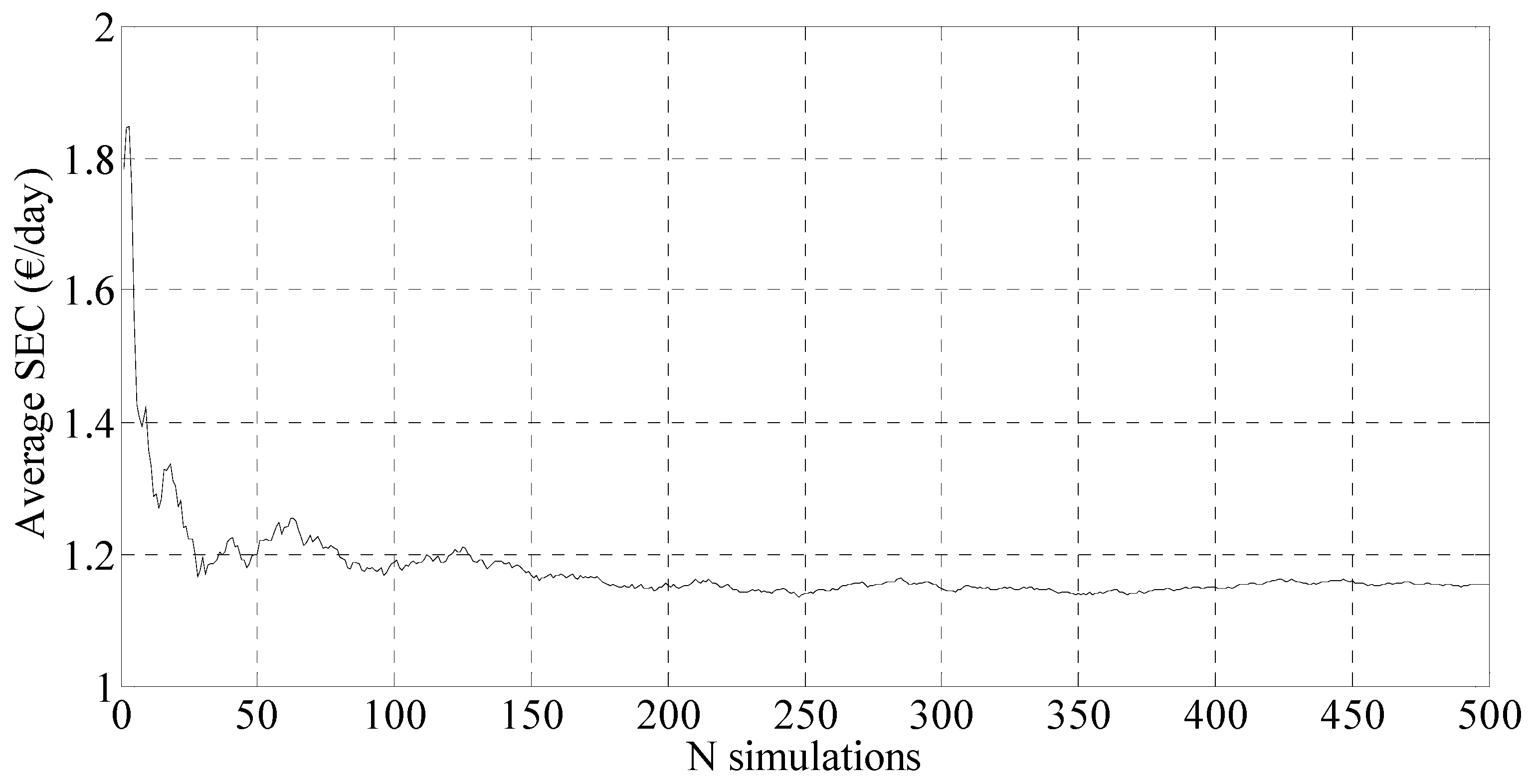
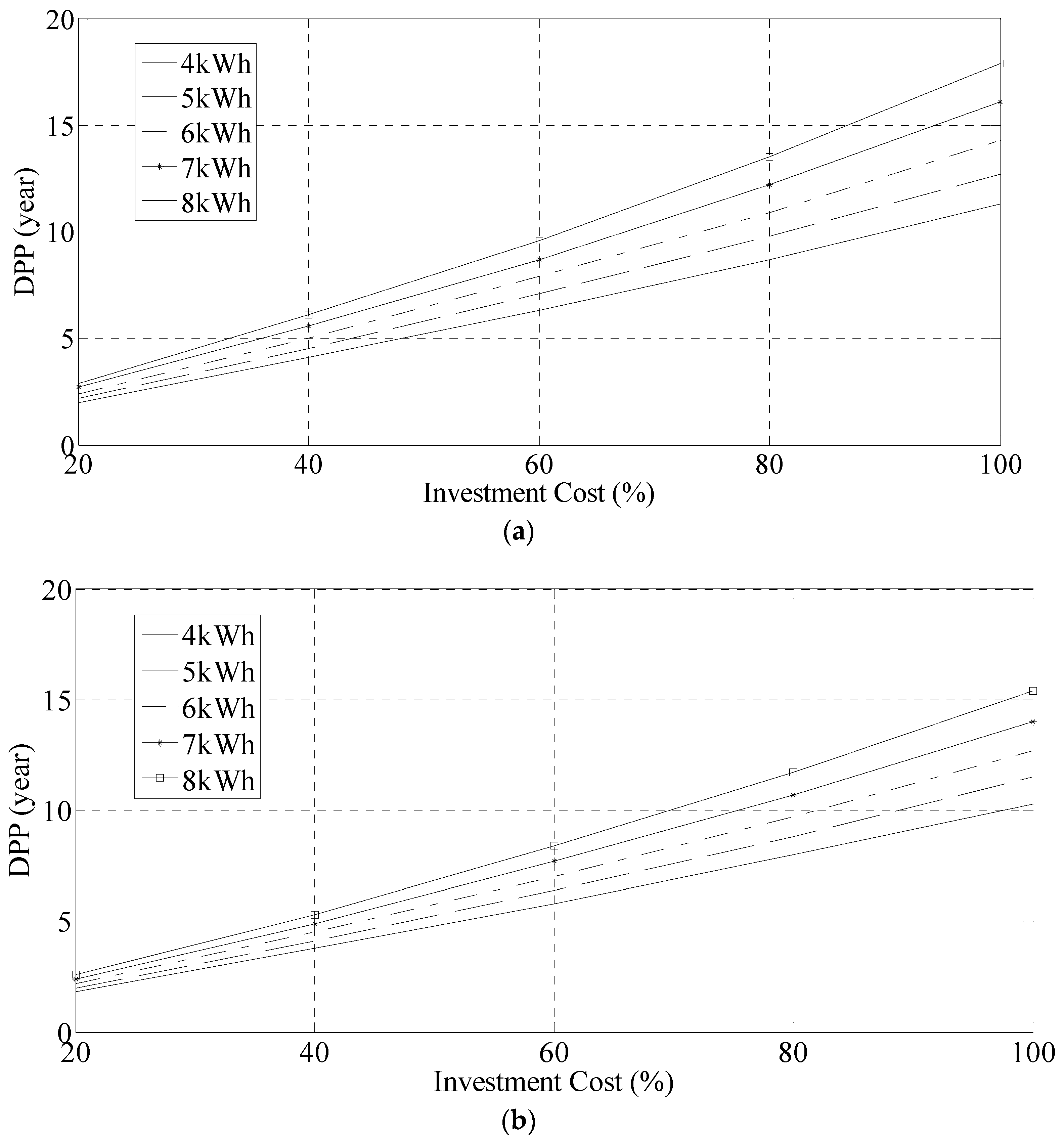
| PV | ESS | ESS | ESS | ESS | ESS |
|---|---|---|---|---|---|
| 4 kWh | 5 kWh | 6 kWh | 7 kWh | 8 kWh | |
| 1 kW | 5556 | 6256 | 6956 | 7656 | 8356 |
| 2 kW | 6556 | 7256 | 7956 | 8656 | 9356 |
| PV (kW) | ESS (kWh) | Io (€) | k (%) | TSC (€/y) | DPP (year) |
|---|---|---|---|---|---|
| 1 | 4 | 5556 | 3 | 586.04 | 11.3 |
| 1 | 5 | 6256 | 3 | 598.06 | 12.7 |
| 1 | 6 | 6956 | 3 | 603.81 | 14.3 |
| 1 | 7 | 7656 | 3 | 606.66 | 16.1 |
| 1 | 8 | 8356 | 3 | 608.97 | 17.9 |
| PV (kW) | ESS (kWh) | Io (€) | k (%) | TSC (€/y) | DPP (year) |
|---|---|---|---|---|---|
| 2 | 4 | 6556 | 3 | 747.10 | 10.3 |
| 2 | 5 | 7256 | 3 | 757.04 | 11.5 |
| 2 | 6 | 7956 | 3 | 762.66 | 12.7 |
| 2 | 7 | 8656 | 3 | 766.15 | 14.0 |
| 2 | 8 | 9356 | 3 | 767.88 | 15.4 |
| PV (kW) | ESS (kWh) | Io (€) | k (%) | TSC (€/y) | DPP (year) |
|---|---|---|---|---|---|
| 2 | 4 | 6556 | 3 | 747.10 | 10.3 |
© 2017 by the authors. Licensee MDPI, Basel, Switzerland. This article is an open access article distributed under the terms and conditions of the Creative Commons Attribution (CC BY) license (http://creativecommons.org/licenses/by/4.0/).
Share and Cite
Romano, R.; Siano, P.; Acone, M.; Loia, V. Combined Operation of Electrical Loads, Air Conditioning and Photovoltaic-Battery Systems in Smart Houses. Appl. Sci. 2017, 7, 525. https://doi.org/10.3390/app7050525
Romano R, Siano P, Acone M, Loia V. Combined Operation of Electrical Loads, Air Conditioning and Photovoltaic-Battery Systems in Smart Houses. Applied Sciences. 2017; 7(5):525. https://doi.org/10.3390/app7050525
Chicago/Turabian StyleRomano, Roberto, Pierluigi Siano, Mariano Acone, and Vincenzo Loia. 2017. "Combined Operation of Electrical Loads, Air Conditioning and Photovoltaic-Battery Systems in Smart Houses" Applied Sciences 7, no. 5: 525. https://doi.org/10.3390/app7050525
APA StyleRomano, R., Siano, P., Acone, M., & Loia, V. (2017). Combined Operation of Electrical Loads, Air Conditioning and Photovoltaic-Battery Systems in Smart Houses. Applied Sciences, 7(5), 525. https://doi.org/10.3390/app7050525







